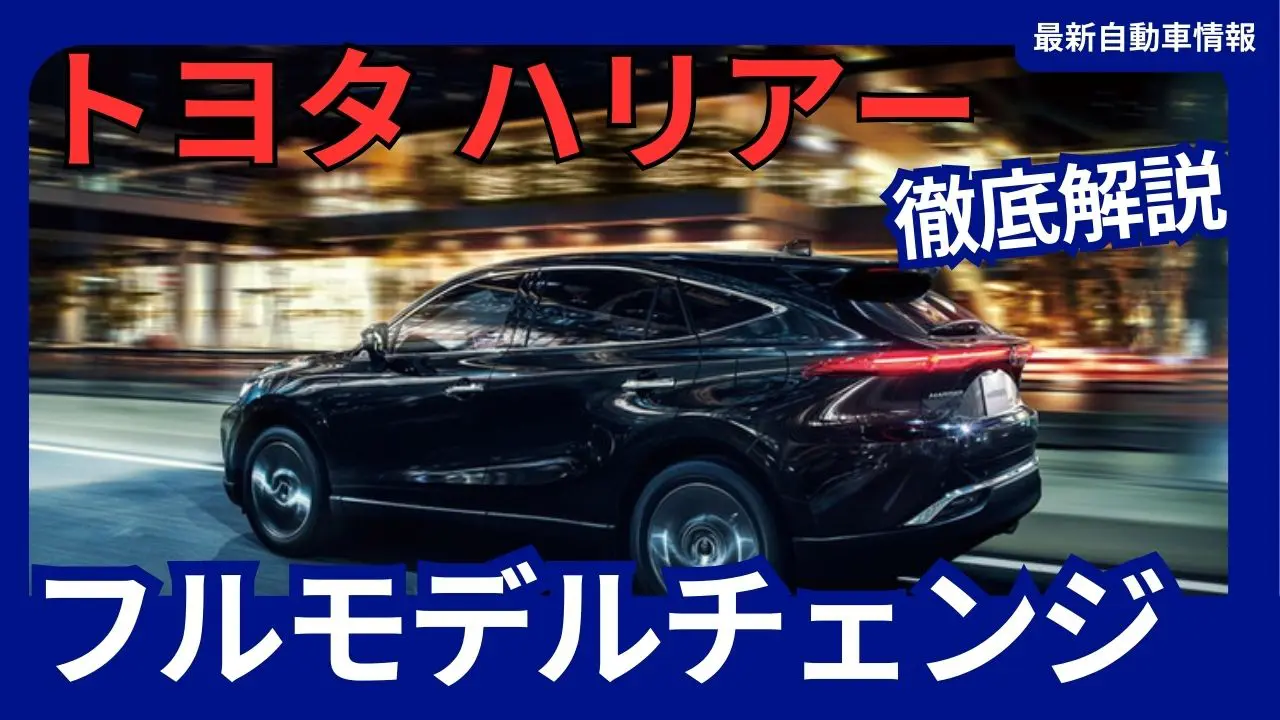
Toyota’s popular SUV, the Harrier, is scheduled to undergo a full model change in 2027. The highlight of this change is the inclusion of the latest 1.5L inline 4-cylinder turbo engine. This is expected to achieve both improved fuel efficiency and powerful driving. The previous 4th generation model was released on June 17, 2020, and this will be the first full model change in seven years. We will thoroughly explain why 2027 and what the specifications will be.
About the new Toyota Harrier full model change
The exterior is expected to further evolve with its sophisticated urban design, enhancing its sense of luxury, while the interior will also combine high-quality materials and the latest technology to improve comfort and convenience.
The new Harrier will also adopt the improved TNGA-K platform, which is also scheduled to be used in the new RAV4. This will improve the body rigidity and further improve the ride comfort. The latest safety technology will also be installed, and the latest version of the preventive safety package “Toyota Safety Sense” will be introduced . This will further strengthen functions such as collision mitigation braking, lane keep assist, and adaptive cruise control, and Toyota teammates “Advanced Park” and “Advanced Drive” will be installed to support safe driving. In addition, “Panoramic View Monitor” will be adopted in the higher grades to support the safety of the driver and passengers.
The new Harrier, scheduled to be released in 2027, will be equipped with a 1.5L inline 4-cylinder turbo engine that brings together Toyota’s latest technologies. This is expected to achieve both better fuel efficiency and stronger acceleration than the previous model.
Toyota’s new Harrier full model change: The highlight is the just-announced latest inline-4 engine
On May 28, 2024, Toyota Motor Corporation (Toyota), Subaru Corporation, and Mazda Motor Corporation (Mazda) jointly declared that they would develop new engines compatible with electrification in order to achieve carbon neutrality through multiple pathways.
The engines announced at this time were small, highly efficient, and powerful 1.5L and 2.0L inline 4-cylinder engines designed for electrification. The 1.5L engine comes in two types: naturally aspirated and turbocharged.
Surprisingly, it has been explained that the 1.5L turbo engine also covers the range of the 2.5L naturally aspirated engine, meaning that all 2.5L engines currently in widespread use could be replaced with the 1.5L turbo engine.
The new engine will be able to meet the strict emission regulations that are scheduled to be introduced in Europe and the US, which would require a 30% reduction in output for existing engines, without reducing output. At the same time, it is said that the volume can be reduced by 20% and the overall height by 15%.
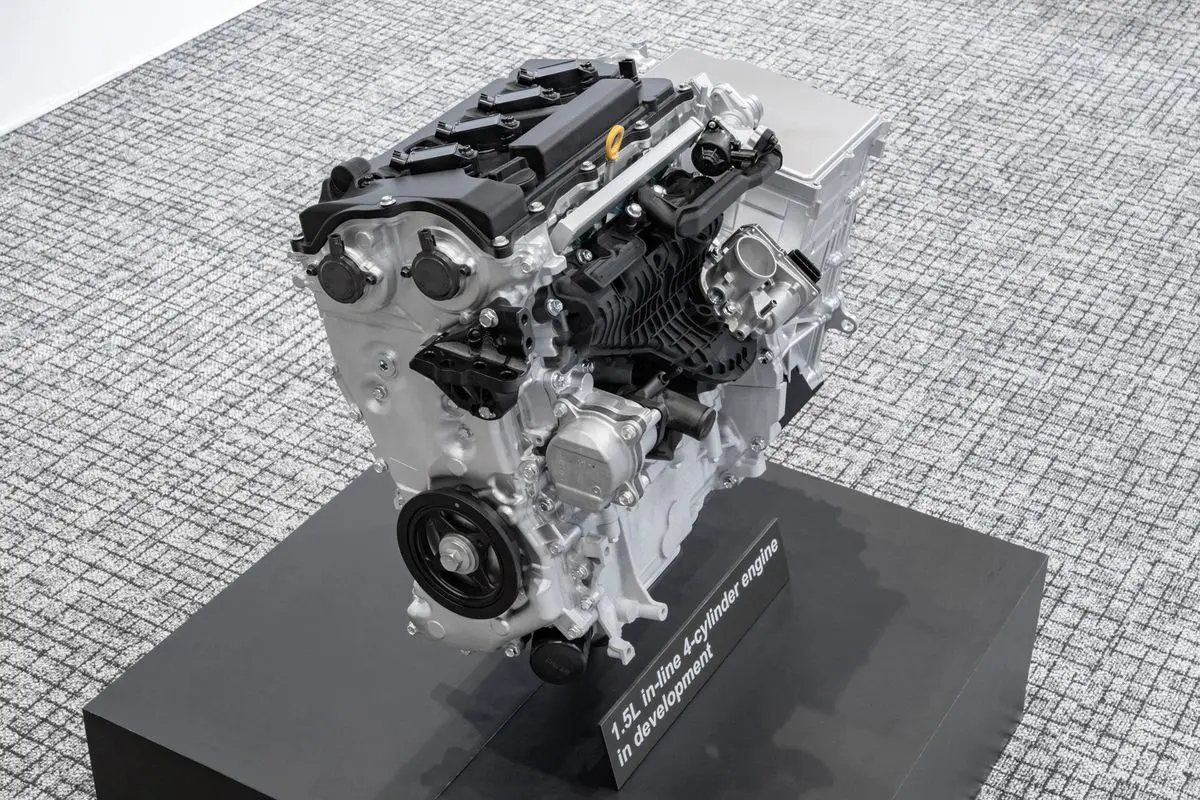
Toyota’s 1.5L inline 4-cylinder engine under development
Reference: Toyota
In other words, by using the motor as the main component, we can expect further fuel efficiency by downsizing and further improving combustion efficiency. For users, this is an advantage not only in terms of fuel efficiency, but also in terms of lower maintenance costs in terms of taxes.

What is Euro 7, the European emission regulation?
Euro 7 is a new automobile emission regulation proposed by the European Commission. This regulation aims to reduce air pollution and environmental impact in Europe, and sets stricter standards than the previous Euro 6.
In November 2022, the European Commission proposed that Euro 7 be applied to passenger cars and light commercial vehicles from July 1, 2025, and to large vehicles from July 1, 2027. However, the introduction was postponed from the 2025 date proposed by the European Commission, and passenger cars and vans will now be introduced from January 2028. Furthermore, the view was expressed that NOx regulations for trucks should be relaxed more than proposed.
When will the new Toyota Harrier be fully redesigned? Release date
At this point, I predict that the Harrier will undergo a full model change around 2027. There are a number of reasons for this.
First of all, if it follows the same flow as the previous model, it will be released after the full model change of the RAV4 . As with the current model, the Harrier is based on the RAV4, with an urbane, sophisticated design and a design that enhances luxury, and considering the timing and global sales of the new TNGA-K platform, the RAV4 is expected to be released first. The RAV4 will be fully remodeled at the earliest between 2025 and 2026. Of course, it will be released in Japan as well. It is expected that the Harrier will not be fully remodeled at the same time, but will be strategically staggered like the previous model. In other words, considering that it will be sold with a delay of about one and a half to two years, the Harrier is expected to be fully remodeled around 2027.


Furthermore, as of 2024, the current fourth-generation Harrier has undergone some improvements, but has never undergone a minor change. In the past, there have been almost no popular Toyota models that have not undergone a minor change, and it is highly likely that the model will continue as is for more than two years with a minor change in 2025 to refresh it. In addition, the current model remains very popular in the Japanese market, and continued sales are quite possible even with minor changes.
In other words, it is highly likely that it will be released around 2027. If Toyota does not choose to make a minor change in 2025, it may be possible that a full model change will be brought forward.
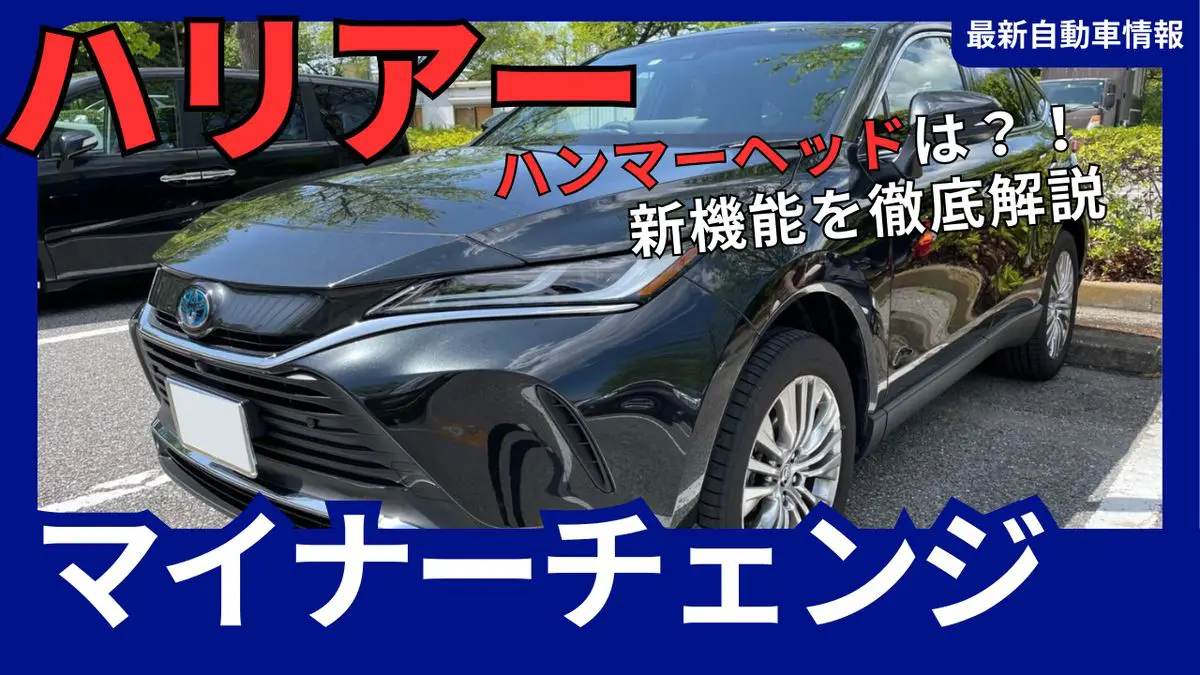
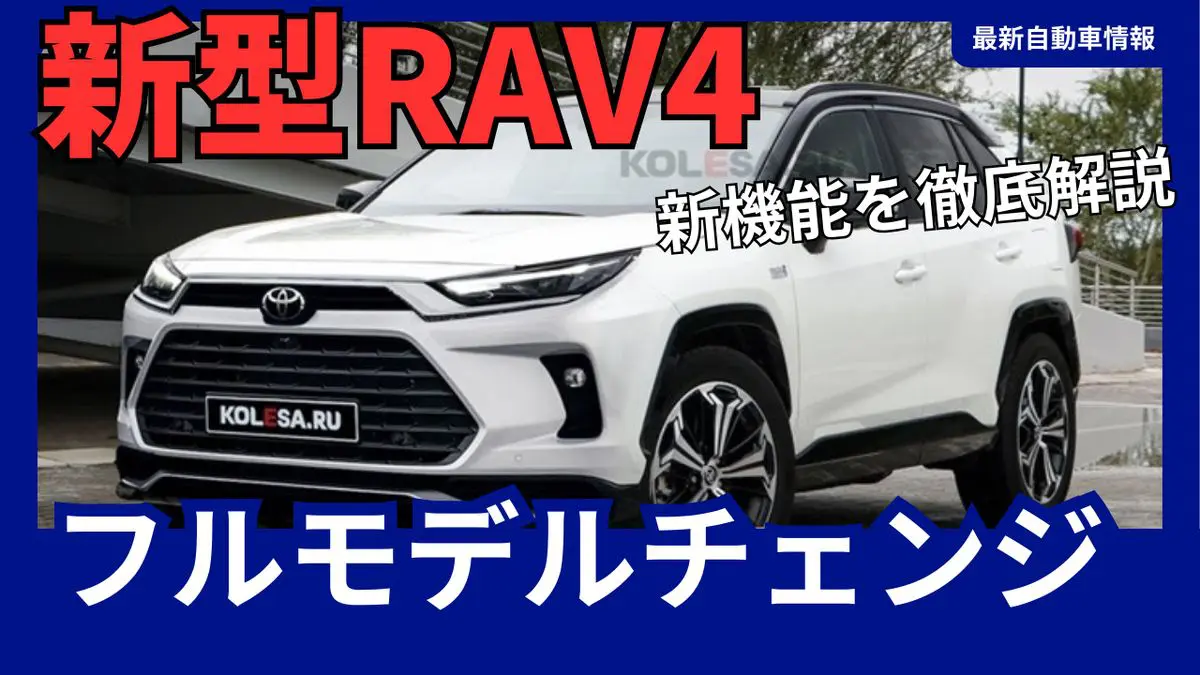
Toyota’s new Harrier full model change: Next-generation Toyota Safety Sense
The next-generation “Toyota Safety Sense” will be standard on all vehicles. This system includes “Pre-Crash Safety” that can detect bicycles during the day and pedestrians at night, and “Lane Tracing Assist (LTA)” that assists steering to keep the car in its lane when “Radar Cruise Control” is activated.
The latest “Pre-crash Safety with Collision Avoidance Assist” has further enhanced functions. These include detection at intersections, acceleration suppression at low speeds, and steering avoidance assistance in emergency situations. With pedestrian detection, the system uses millimeter-wave radar and a camera to detect vehicles and pedestrians ahead, and provides collision avoidance assistance and damage mitigation through warnings, brake assist, and automatic braking. The automatic brake operates at speeds of 10 to 80 km/h for pedestrians, and appropriately slows down depending on the speed difference. It also operates at a wide speed range from 10 km/h to maximum speed for vehicles, and can decelerate at high speeds even for stopped vehicles. In addition, functions such as “acceleration suppression at low speeds,” “detection of oncoming vehicles and pedestrians when turning right at an intersection,” and “steering avoidance assistance in emergency situations” have been added.
- The low-speed acceleration suppression function detects pedestrians, cyclists, and vehicles directly in front of the vehicle when traveling at low speeds and suppresses acceleration.
- It can also detect oncoming vehicles going straight when turning right at an intersection, as well as pedestrians crossing from the opposite direction when turning right or left.
- An emergency steering avoidance assistance function that assists steering when the driver makes an evasive maneuver in an emergency.
The Road Sign Assist (RSA) detection range has been expanded to include reading major roadside traffic signs such as “speed limit,” “stop,” “no entry,” and “no departure” and displaying them on the instrument panel.
Lane Departure Alert (LDA) The LDA camera recognizes the white and yellow lines of the driving lane, and if it detects the possibility of lane departure, it warns the driver with a buzzer and a visual indication, helping to avoid collisions caused by lane departure.
Leading vehicle departure notification function If you are stopped behind the vehicle ahead at a traffic light or in a traffic jam and do not notice the vehicle ahead starting to move, a buzzer will sound and the display will show a notification.
The Automatic High Beam (AHB) camera detects the headlights of oncoming vehicles or the taillights of the vehicle ahead and automatically switches between high and low beams, reducing glare for drivers of other vehicles and helping to ensure forward visibility at night.
Radar Cruise Control: A millimeter wave radar is used to detect the distance between the vehicle and the vehicle ahead, and radar cruise control is adopted, which allows the vehicle to follow the vehicle ahead while maintaining a certain distance by adjusting the speed to match the speed of the vehicle ahead within the set vehicle speed. The millimeter wave radar and camera detect lane changes of the vehicle ahead, realizing smoother acceleration and deceleration control. Toyota aims for “zero traffic fatalities and injuries,” the ultimate wish of the mobility society, and is researching and developing various safety equipment and systems based on the “Integrated Safety Concept.” Toyota is also working to “develop safer vehicles and technologies,” and is strengthening a wide range of efforts for traffic safety through “participation in traffic environment improvement” and “traffic safety awareness activities for people.”
Lane Tracing Assist (LTA) Lane Tracing Assist [LTA], featured on the new Lexus LS series, is being adopted for the first time in the next-generation Toyota Safety Sense P. When driving on a highway or expressway, turning on the Lane Tracing Assist [LTA] switch while the radar cruise control is activated provides steering assistance necessary to keep the vehicle in its lane.
Advanced Safety
Intelligent Clearance Sonar (Parking Support Brake Stationary) A system that helps to mitigate collisions caused by accidentally stepping on the accelerator or pressing it too hard, and helps to reduce damage. The “Clearance Sonar” displays and sounds a buzzer when approaching stationary objects while driving, such as when parking, and now has an added function to mitigate contact with stationary objects. The sonar can also detect glass at convenience stores and other places. When a stationary object is detected in the direction of travel while driving at low speeds (15km/h or less), the hybrid system output is suppressed, and if the distance becomes even closer, the brakes are automatically applied.
Emergency brake signal (hazard lights flashing) When you apply the brakes suddenly, the hazard lights flash automatically.
If the driver continues to make no operations while the Lane Tracing Assist (LTA) system is in control , it will prompt the driver to take action with sound, visual and gradual deceleration warnings, and will alert people outside the vehicle with hazard lights and a horn while decelerating and stopping within the vehicle’s lane, helping to avoid accidents involving damage to the vehicle or other parties involved and reducing the damage caused by such accidents.
Digital inner mirror: Images from a camera mounted on the rear of the vehicle are displayed on the rearview mirror.
Advanced Park Remote Function: Provides on-screen and voice/buzzer operation guidance, and assists with backing into a target parking position confirmed on the screen and exiting from parallel parking by operating the steering wheel, shift position, accelerator and brake. In addition, a dedicated smartphone app is available, allowing remote operation from outside the car to park.
Panoramic View Monitor (360° monitor) Since it allows you to see areas that are hard to reach, such as diagonally behind or directly to the side of the car, you can spot obstacles sooner.
Blind Spot Monitor (BSM) uses radar to detect vehicles in adjacent lanes. If a vehicle enters the blind spot, an LED indicator mounted on the door mirror lights up.
Safe Exit Assist (SEA) When exiting the vehicle, the blind spot monitor (BSM) sensor is used to detect approaching vehicles, including bicycles, from behind. If the system determines that there is a risk of collision with the open door or with a passenger who has exited the vehicle, an indicator in the door mirror is illuminated to warn the driver.
Rear Cross Traffic Auto Brake Detects blind spots when reversing and alerts the driver. If there is a risk of collision, the system automatically applies brakes to help mitigate damage caused by collisions with approaching vehicles.
Remote Start (App) A new feature that allows you to start the engine and air conditioner from the MyTOYOTA app
A word from the editorial department
The arrival of the new Harrier will bring a breath of fresh air to the SUV market. The new Harrier, which combines environmental friendliness and driving performance at a high level, is sure to capture the hearts of many users. Let’s look forward to the arrival of the new Harrier, packed with Toyota’s latest technology. We ca n’t wait for its release in 2027.
We will keep you updated as new information becomes available.
Harrier related articles



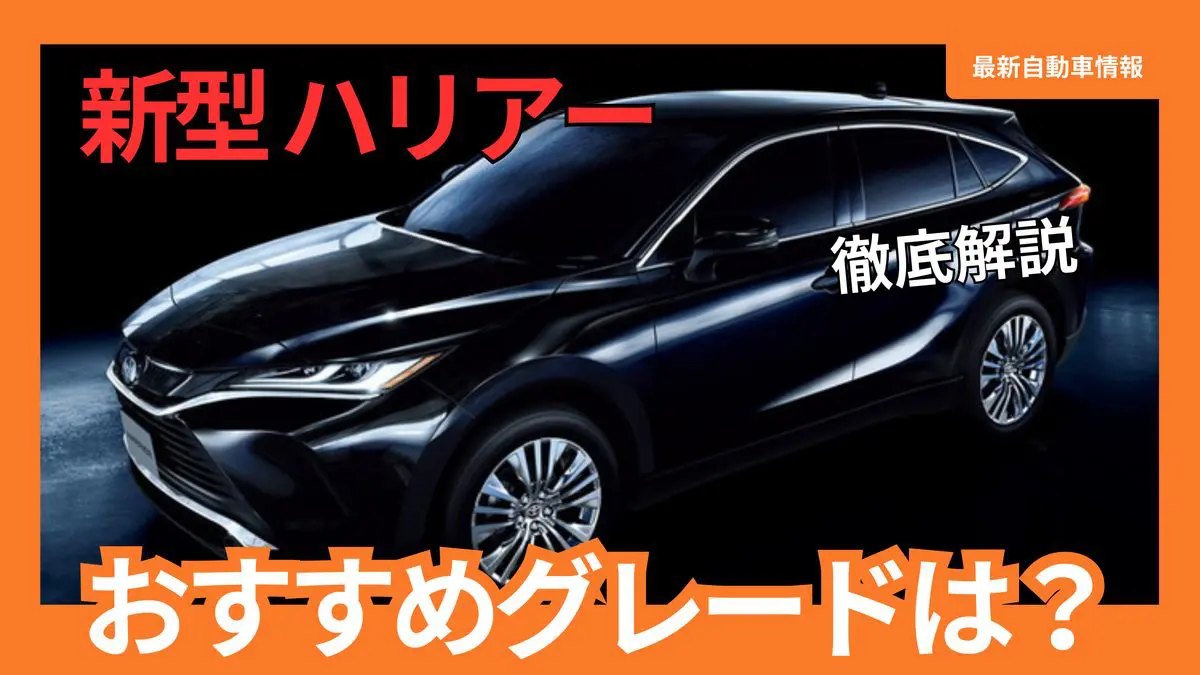
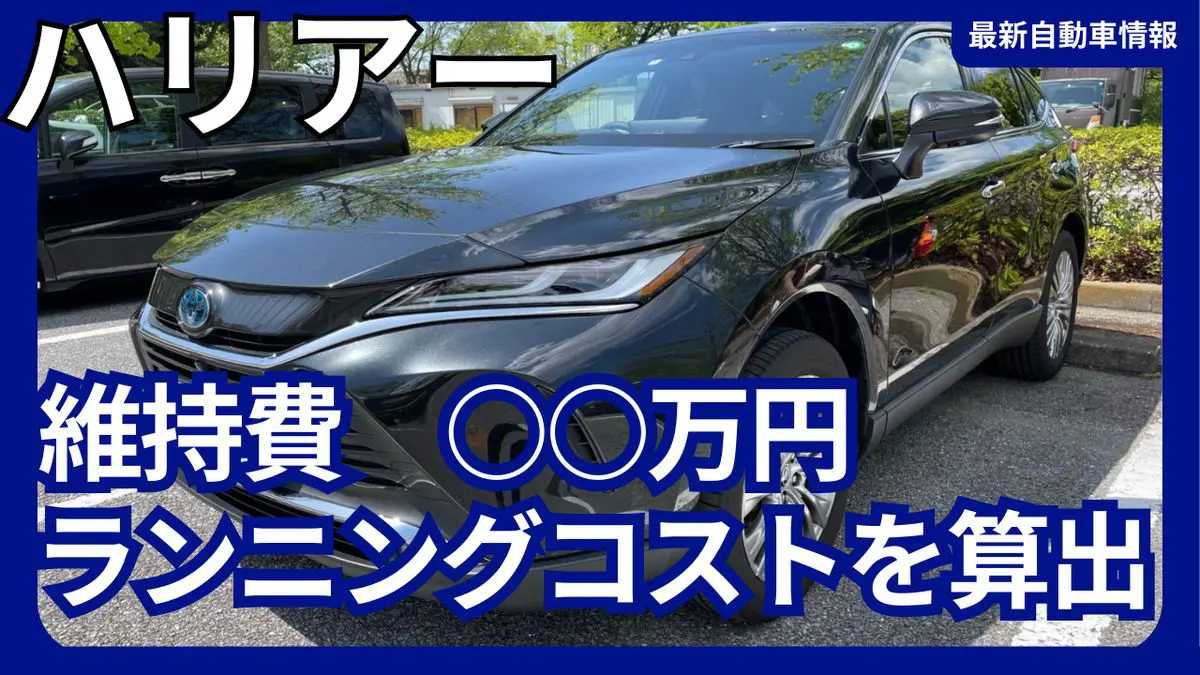
Toyota Harrier
